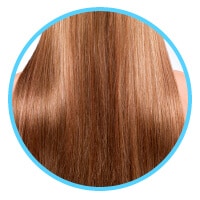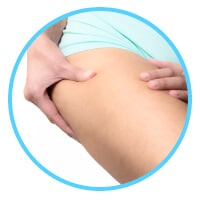Elevated blood pressure is when the pressure on the arteries and blood
vessels becomes too high and the arterial wall becomes distorted causing
extra stress on the heart. Long term-high blood pressure increases the
risk of stroke, heart attack and diabetes.
Causes of high blood pressure include a high salt diet, emotional stress, alcohol, caffeine, smoking, obesity, inactivity, birth control pills, and heavy-metal poisoning.
Low sodium foods – Excess salt consumption raises blood pressure. Limit your consumption to no more than 1500-2000 mg daily.
High potassium foods – Potassium counteracts the effect of sodium and helps lower blood pressure, include foods like melons, avocados, and bananas.
Omega-3 rich foods – Consume omega-3 rich foods like grass-fed beef, wild caught salmon, chia and flax seeds to reduce inflammation.
Dark chocolate – Look for a dark chocolate that contains at least 200 mg of cocoa phenols which can reduce blood pressure.
Trans fats and Omega-6 fats – These fats increase inflammation and blood pressure and are found in packaged foods and conventional meats.
Sugar – High sugar consumption is connected to high blood pressure.
Caffeine – Too much caffeine can cause an increase in blood pressure.
Alcohol – Narrows arteries and can increase blood pressure.
Fish oil reduces blood pressure and inflammation when taken long-term.
#2 Magnesium (500 mg before bed)
Magnesium helps with relaxation of smooth muscle and reduces blood pressure.
#3 CoQ10 (100-300 mg daily)
Becomes depleted as we age, which may be related to why blood pressure also increases as we age.
#4 Potassium
It is best not to take a potassium supplement in high doses unless otherwise directed by a doctor.
#5 Garlic (600mg aged extract)
Can help lower blood pressure and relax smooth muscles.
Lifestyle Tip
Reducing stress can lower blood pressure. Some tips include getting better sleep, scheduling in more free-time and fun, surrounding yourself with encouraging friends and also exercising on a daily basis.
Try these natural remedies for high blood pressure to improve your heart and overall health.
Causes of high blood pressure include a high salt diet, emotional stress, alcohol, caffeine, smoking, obesity, inactivity, birth control pills, and heavy-metal poisoning.
Blood pressure ranges include:
· Normal: Less than 120/80
· Prehypertension: 120-139/80-89
· Stage 1 high blood pressure: 140-159/90-99
· Stage 2 high blood pressure: 160 and above/100 and above
Frequently,
there are no symptoms as blood pressure increases but warning signs for
very high blood pressure can include chest pains, confusion, headaches,
ear noise or buzzing, irregular heartbeat, nosebleeds, tiredness, or
vision changes.
Top Foods For Blood Pressure Diet
High fiber foods – Unprocessed foods high in fiber such as vegetables, fruits, and seeds should be the basis of any healthy diet.Low sodium foods – Excess salt consumption raises blood pressure. Limit your consumption to no more than 1500-2000 mg daily.
High potassium foods – Potassium counteracts the effect of sodium and helps lower blood pressure, include foods like melons, avocados, and bananas.
Omega-3 rich foods – Consume omega-3 rich foods like grass-fed beef, wild caught salmon, chia and flax seeds to reduce inflammation.
Dark chocolate – Look for a dark chocolate that contains at least 200 mg of cocoa phenols which can reduce blood pressure.
Blood Pressure Foods to Avoid
High sodium foods -Sodium raises blood pressure, avoid high sodium processed foods, pickles, olives, or canned foods.Trans fats and Omega-6 fats – These fats increase inflammation and blood pressure and are found in packaged foods and conventional meats.
Sugar – High sugar consumption is connected to high blood pressure.
Caffeine – Too much caffeine can cause an increase in blood pressure.
Alcohol – Narrows arteries and can increase blood pressure.
Top 5 Blood Pressure Natural Remedies
#1 Fish oil (1,000-2,000mg daily)Fish oil reduces blood pressure and inflammation when taken long-term.
#2 Magnesium (500 mg before bed)
Magnesium helps with relaxation of smooth muscle and reduces blood pressure.
#3 CoQ10 (100-300 mg daily)
Becomes depleted as we age, which may be related to why blood pressure also increases as we age.
#4 Potassium
It is best not to take a potassium supplement in high doses unless otherwise directed by a doctor.
#5 Garlic (600mg aged extract)
Can help lower blood pressure and relax smooth muscles.
Lifestyle Tip
Reducing stress can lower blood pressure. Some tips include getting better sleep, scheduling in more free-time and fun, surrounding yourself with encouraging friends and also exercising on a daily basis.
Essential Oils For Blood Pressure
Essential oils lower blood pressure by dilating arteries, acting as antioxidants to reduce oxidative stress and by decreasing emotional stress. The most effective essential oils for blood pressure are lavender, ylang ylang, clary sage and frankincense.Try these natural remedies for high blood pressure to improve your heart and overall health.


























